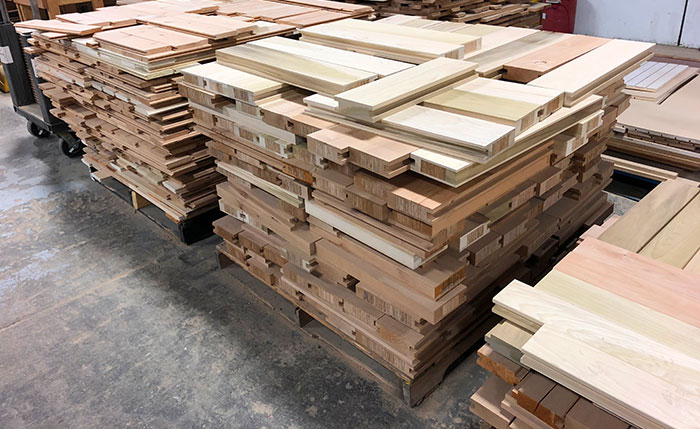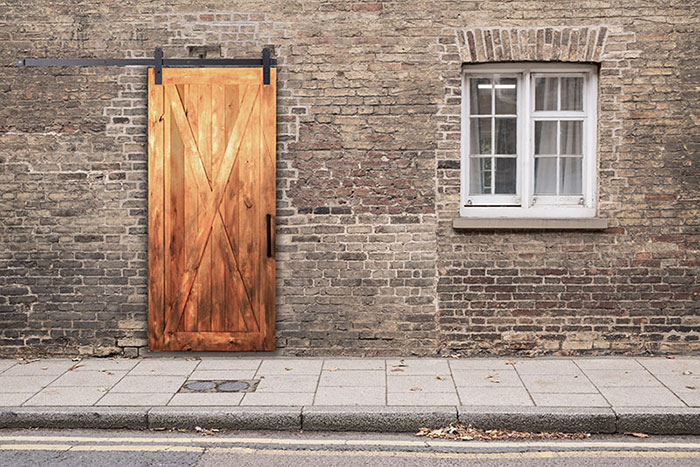1.800.891.8312
800-891-8312
FREE SHIPPING*
Free Shipping Details
Most orders over $500 qualify. Free shipping applies to Barn Door Hardware, Barn Doors, and Pocket Doors over $500.
Note: Front doors, interior doors, shower doors, any oversized door (wider than 3ft and taller than 7ft) and any special order doors have shipping costs calculated at checkout. Some barn door hardware track lengths do not qualify for free shipping.

What wood is best for outdoor use for barn doors?
Wednesday, June 19th, 2019
Author: Kate Allen - Rustica Founder and CEO
Share

There is nothing quite like the smell of freshly cut real, solid wood. In fact, I love the smell out on the plant floor where all of Rustica's doors are manufactured! Fresh cut alder, cedar, mahogany, oak and especially cedar wood fills the air with life and energy. Although solid wood makes the most beautiful doors, it has its downsides when used primarily outdoors and exposed heavily to the elements. Rotting, insect damage, and decay are all downsides to using real wood for outdoor architecture. We have identified the best options for outdoor functional art (aka Rustica's barn doors), and outdoor rated architectural products, like shiplap siding for outdoor use.
There are essentially 3 categories for outdoor-rated wood options.
Category 1–Exterior lumber not treated with chemical preservatives
Category 2–Exterior treated lumber
Category 3–Exterior rot-free composites
Category 1–Exterior Lumber Not Treated with Chemical Preservatives
Exterior lumber not treated with chemical preservatives include cypress, redwood and western red cedar. Grown and offered primarily in the western United States, redwood is a top choice due to its natural, rot resistant wood fiber. Redwood can often be compared to cedar in price but more than anything, your location will determine the cost of solid wood materials as each wood species grows differently in select regions. Red cedar, often called western cedar is most common in the Midwest and is decay resistant without adding chemicals to the wood. Red cedar has a distinct aromatic quality. Cypress wood is primarily grown in the eastern United States as well as the South. Cypress grows in swamps with exposed roots and is often the top pick of the three woods due to its inexpensive price point.Category 2–Exterior Treated Lumber
Exterior-treated lumber includes teak, African mahogany, white oak and rift white oak. This lumber is treated with chemical preservatives such as Alkaline Copper Quat or ACQ . This wood chemical is water based and is applied by forcing the product deep into the wood fibers using pressure. The lumber becomes saturated with the rot resistant chemical that allows it to hold up to the elements and ward off insects.Category 3–Exterior Rot-free Composites
Exterior rot-free composites are typically made from wood fiber, thermoplastic resins, recycled materials, and wood flour. Wood like composites have no visual defects, and do not compress like wood. Unlike wood, composites don't absorb heat and can become very hot. Composites also don't allow for staining or chiseling and are problematic when using typical fastening screws. Composites however, don't splinter or require upkeep, staining, and re-conditioning like wood does.
Powered by Froala Editor


Rustica Shop & HQ 1060 Spring Creek PlaceSpringville Utah 84663Customer Service & Sales(800)-891-8312

Hitching Post
Event Venue
1520 N Main Street
Springville UT 84663
PRODUCTS
FEATURES
COMPANY
BUSINESS



